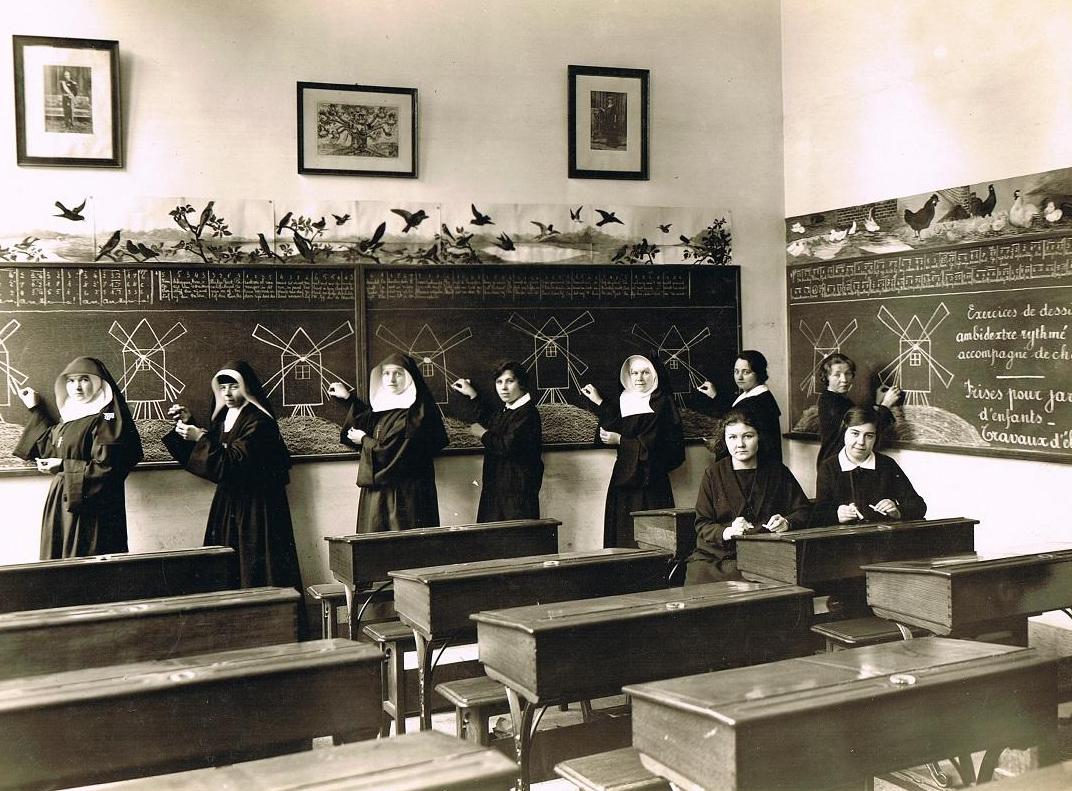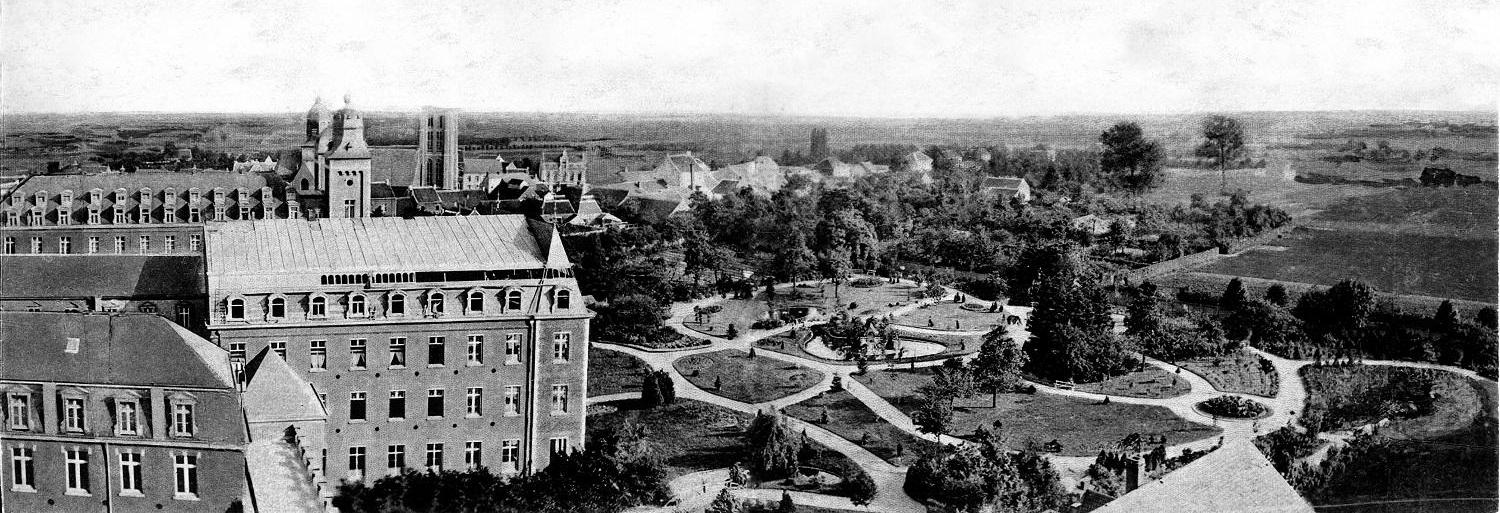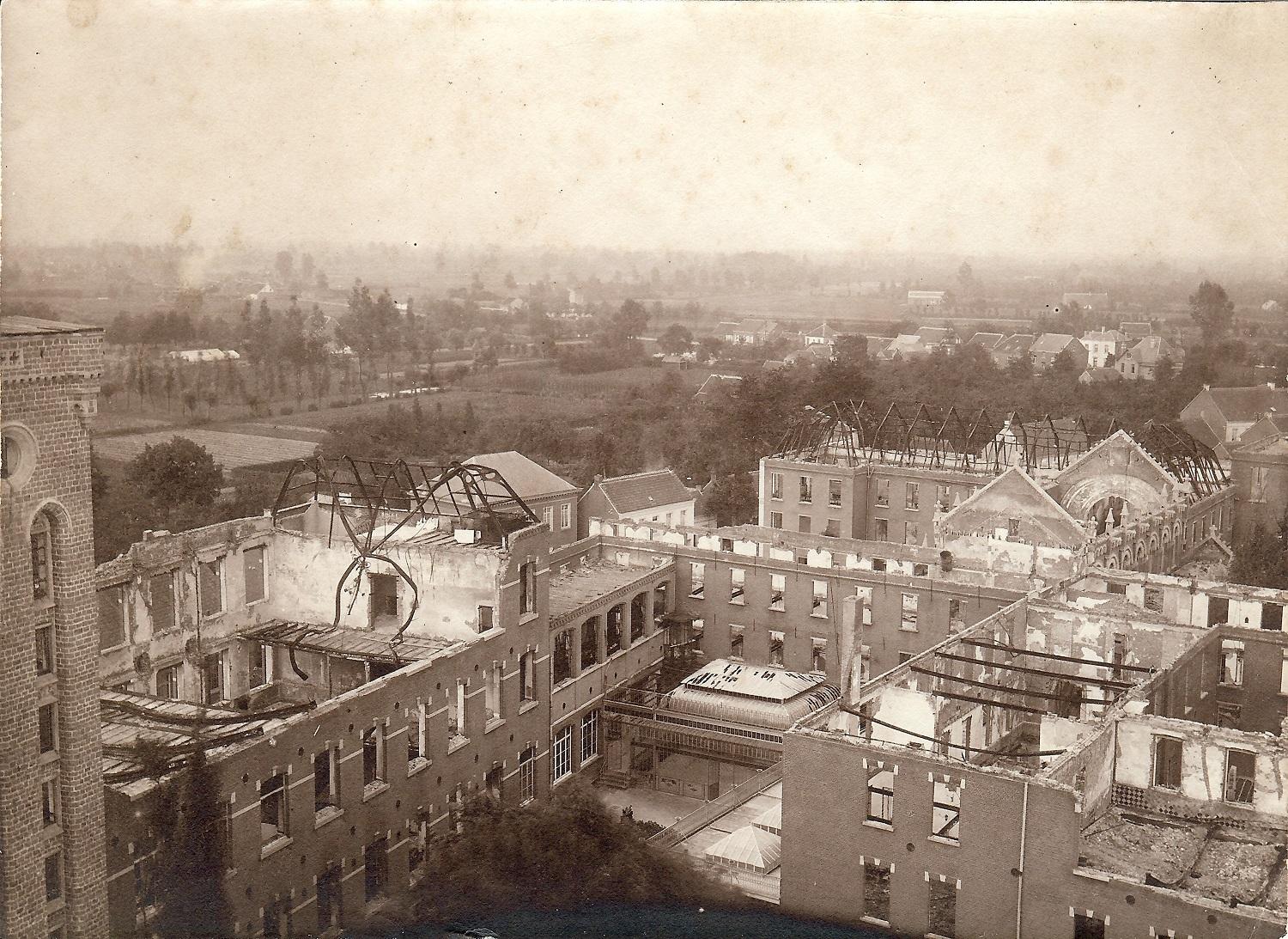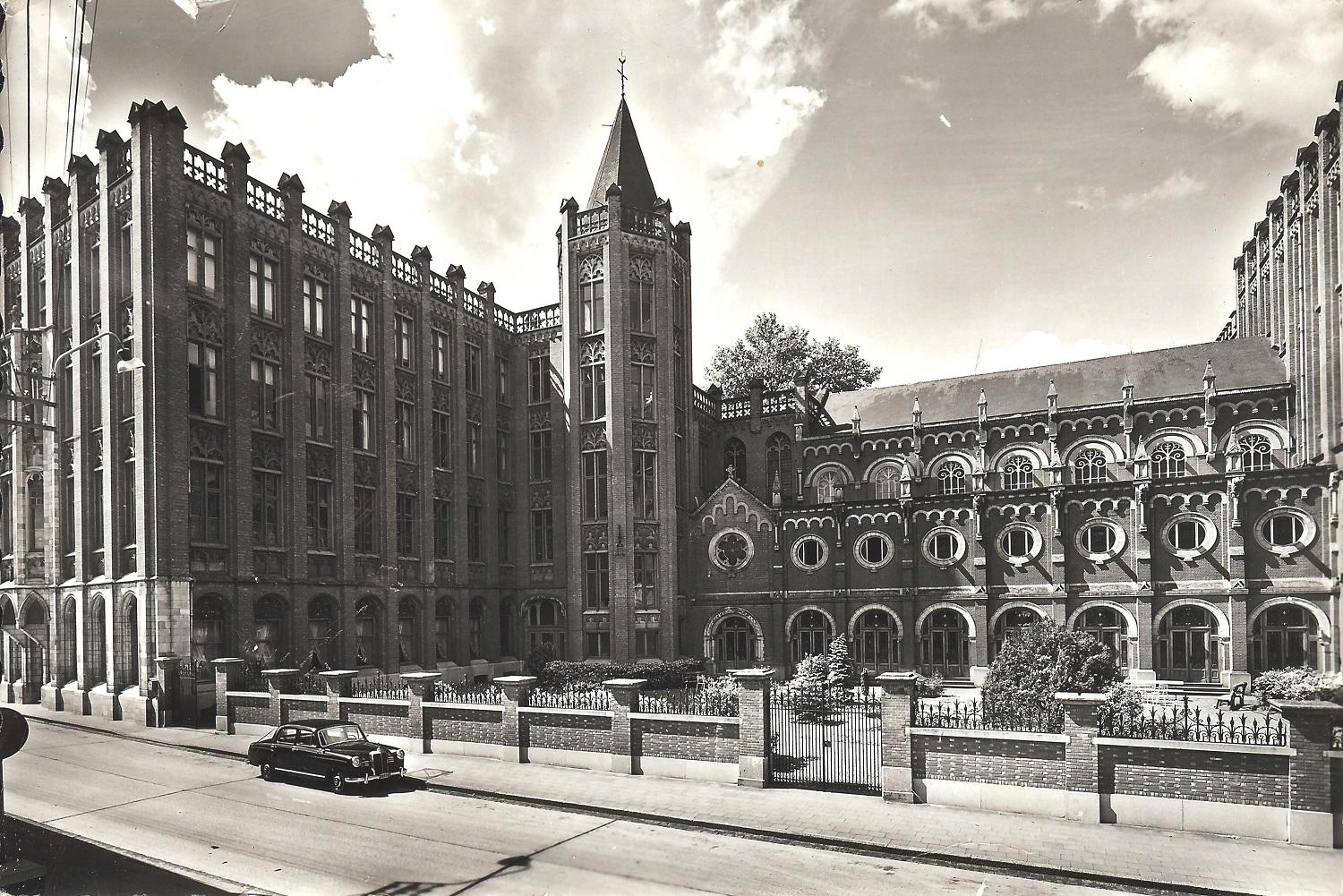History

History of the Ursuline Institute
Modest beginnings
The story of the Ursuline sisters in Onze-Lieve-Vrouw-Waver started modestly in 1841. Priest Verheyden wanted to provide proper education to the local girls and appealed to his colleague Lambertz from Tildonk and the Ursuline sisters who were present there. The first eight sisters arrived in Onze-Lieve-Vrouw-Waver on 22 April 1841. They moved into a modest convent house with a small school and called it ‘Gethsemane’, which can be translated as ‘olive grove’.
Education for girls was not a matter of course at the time, something the sisters changed. Soon after, they also opened a boarding school on the estate and expanded the existing buildings with additional classes, dormitories and a new chapel. This was the first time the Ursuline Institute had to expand, but not the last.


International reputation and prestige
Female students from Belgium and abroad found their way to Onze-Lieve-Vrouw-Waver. The school grew into a huge complex on a 10-hectare estate with classrooms, refectories, study halls, recreation rooms, dormitories, a bathhouse with its own water tower and a park area with unique rustic-concrete elements.
With its green surroundings, well-maintained buildings and solid educational offering, the reputation of the Ursuline Institute soon spread far beyond the borders of Belgium. By 1900, the Ursuline Institute had an established international reputation. Almost a quarter of the pupils were of foreign origin, with girls from Italy, Spain, Romania, Panama, Brazil, Australia and Turkey, among others. The sisters decided as a result to have an impressive reception area built in art-nouveau style, the Winter Garden. A bold choice, but the beautiful structure did what it was supposed to do: attract the daughters of wealthy bourgeois from around the world. The piano gallery, monastery church and English garden also drew the attention worldwide of wealthy parents with daughters.
With ambitious building projects, the sisters ensured that their Institute remained on the international map. In doing so, they put into practice the ideas of the international movement around ‘l’art à l’école’: the school complex should be a stimulating environment for inquisitive young girls. Symbolic decorations were deliberately placed all over the institute. The underlying idea was that those who look and read will learn spontaneously.
Reconstruction and protection after WWI
With the outbreak of World War I, all 700 pupils were sent home. Those who could not go home left for the coast with the sisters. The Belgian Red Cross converted part of the school complex into an infirmary and field hospital. The Ursuline Institute, located on the front line, suffered heavily and several wings were burned down completely. Miraculously, the church and the delicate Winter Garden came through relatively unharmed.
After the war, the sisters soon made plans to rebuild the school, which was to be even bigger and more functional. They decided to move the Winter Garden and adjacent piano gallery. By rotating the building a quarter of a turn and placing it between two wings, they wanted to give the fragile structure more protection.


Change and reform after WWII
World War II broke out and once again there was shelling in the region. Fortunately, the damage to the Ursuline Institute was not too bad and was rapidly repaired. After the liberation in September 1944, part of the school served for several months as a military hospital for Allied soldiers.
After World War II, pupil numbers rose to 950. The sisters? They continued to expand their educational offering and regularly had the school buildings modernized. They no longer expanded.
In terms of education, several major reforms took place in Belgium from the 1950s. Dutch became the official language of instruction, striking a blow to the school’s international appeal. Not much later, the boarding school closed. By now, boys were also welcome at the Ursuline Institute. Those who visit the site on school days as part of a group tour will be able to see for themselves this flourishing school life.
New challenges
The Winter Garden was listed as a monument in 1987 on account of its exceptional historic, artistic and architectural value. Those who had campaigned for the building to be demolished were proven wrong: the official listing – which extended to side galleries with murals and furnishings from light fixtures to furniture – brought about a significant shift in how the site was perceived.
The number of Ursuline sisters shrank year by year and teaching duties were gradually taken over by lay people. To preserve the building complex for the future, the sisters founded the heritage association vzw Wintertuin in 1994. The organization takes care of the conservation and restoration of the Ursuline Institute and is also committed to opening the monumental parts of the institute to the public.
Finally, in 2015, the Ursuline sisters decided to transfer their patrimony to a public utility foundation. As the new owner, this foundation guarantees the future preservation of the estate as a whole. To achieve its management objectives, the foundation relies on the partners who use the estate: the secondary school Sint-Ursula Instituut, vzw Wintertuin and Stichting Kempens Landschap, the Congregation of the Ursuline sisters and vzw Eclips.